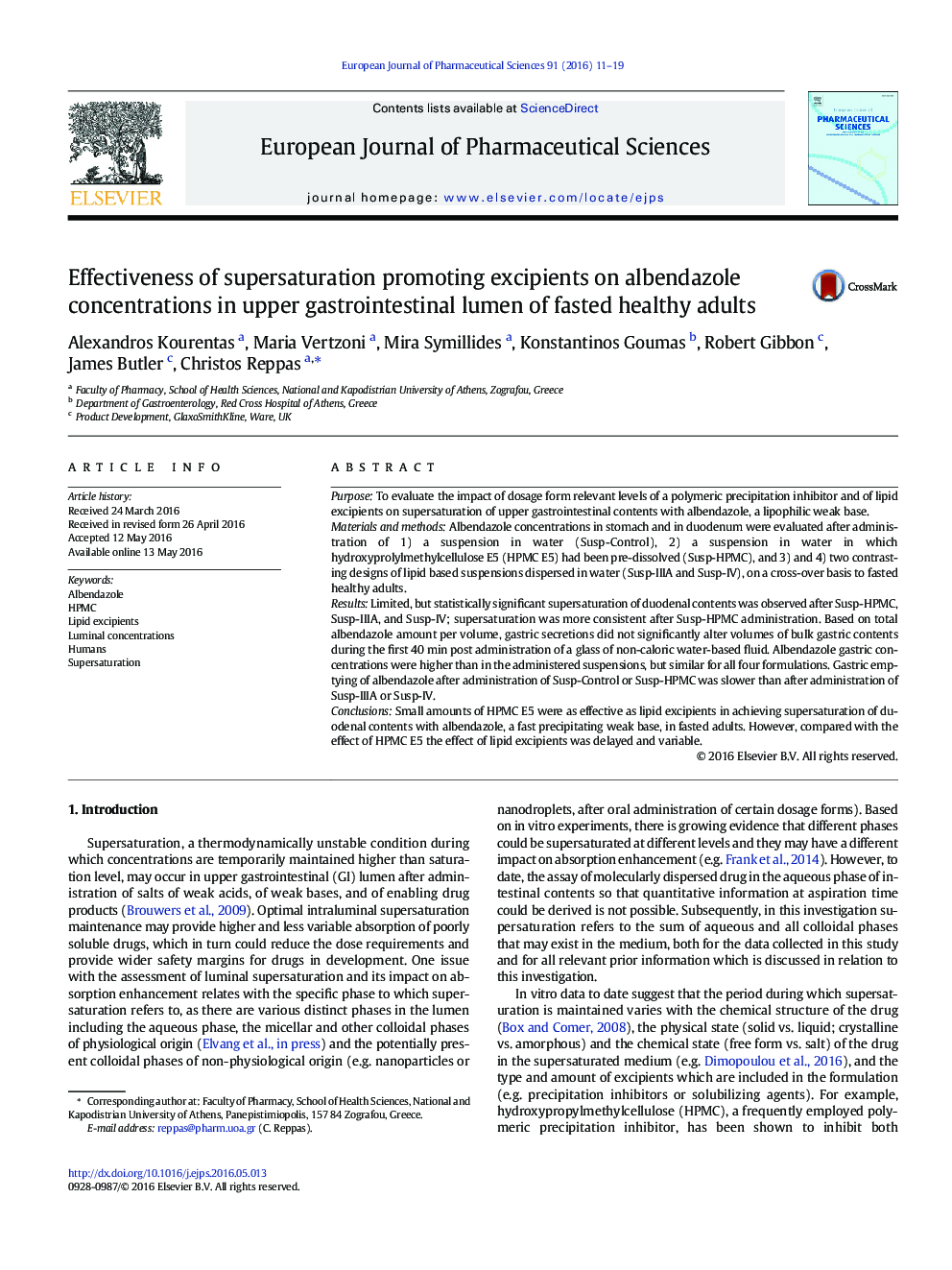| Article ID | Journal | Published Year | Pages | File Type |
|---|---|---|---|---|
| 5809492 | European Journal of Pharmaceutical Sciences | 2016 | 9 Pages |
PurposeTo evaluate the impact of dosage form relevant levels of a polymeric precipitation inhibitor and of lipid excipients on supersaturation of upper gastrointestinal contents with albendazole, a lipophilic weak base.Materials and methodsAlbendazole concentrations in stomach and in duodenum were evaluated after administration of 1) a suspension in water (Susp-Control), 2) a suspension in water in which hydroxyprolylmethylcellulose E5 (HPMC E5) had been pre-dissolved (Susp-HPMC), and 3) and 4) two contrasting designs of lipid based suspensions dispersed in water (Susp-IIIA and Susp-IV), on a cross-over basis to fasted healthy adults.ResultsLimited, but statistically significant supersaturation of duodenal contents was observed after Susp-HPMC, Susp-IIIA, and Susp-IV; supersaturation was more consistent after Susp-HPMC administration. Based on total albendazole amount per volume, gastric secretions did not significantly alter volumes of bulk gastric contents during the first 40Â min post administration of a glass of non-caloric water-based fluid. Îlbendazole gastric concentrations were higher than in the administered suspensions, but similar for all four formulations. Gastric emptying of albendazole after administration of Susp-Control or Susp-HPMC was slower than after administration of Susp-IIIA or Susp-IV.ConclusionsSmall amounts of HPMC E5 were as effective as lipid excipients in achieving supersaturation of duodenal contents with albendazole, a fast precipitating weak base, in fasted adults. However, compared with the effect of HPMC E5 the effect of lipid excipients was delayed and variable.
Graphical abstractDownload high-res image (173KB)Download full-size image
